
CASA DEI GIARDINI

ELLE DECOR USA COVER STORY #ISSUE JULY 2024 PHOTOS: HELENIO BARBETTA STYLING: CHIARA DAL CANTO

ELLE DECOR ITALIA COVER STORY #ISSUE OCTOBER 2024


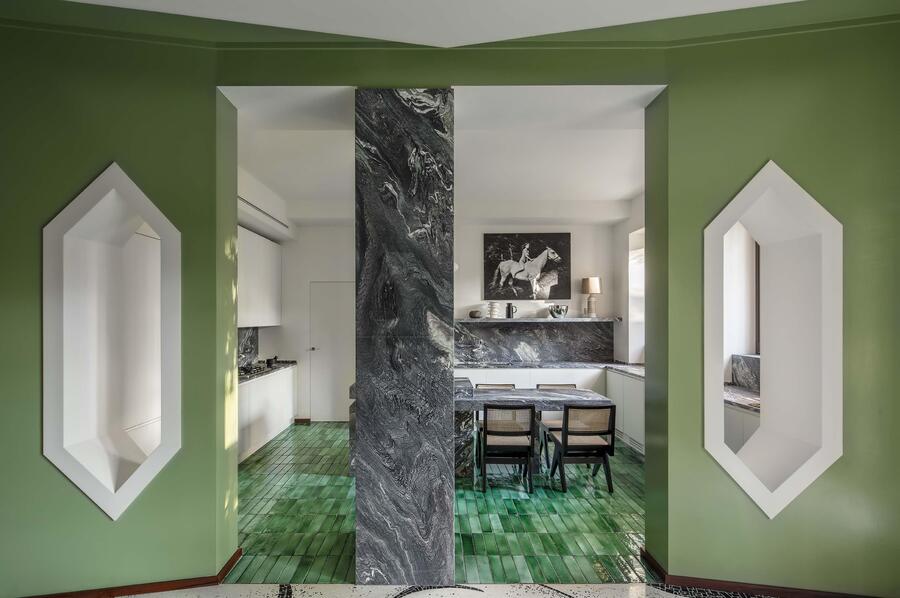
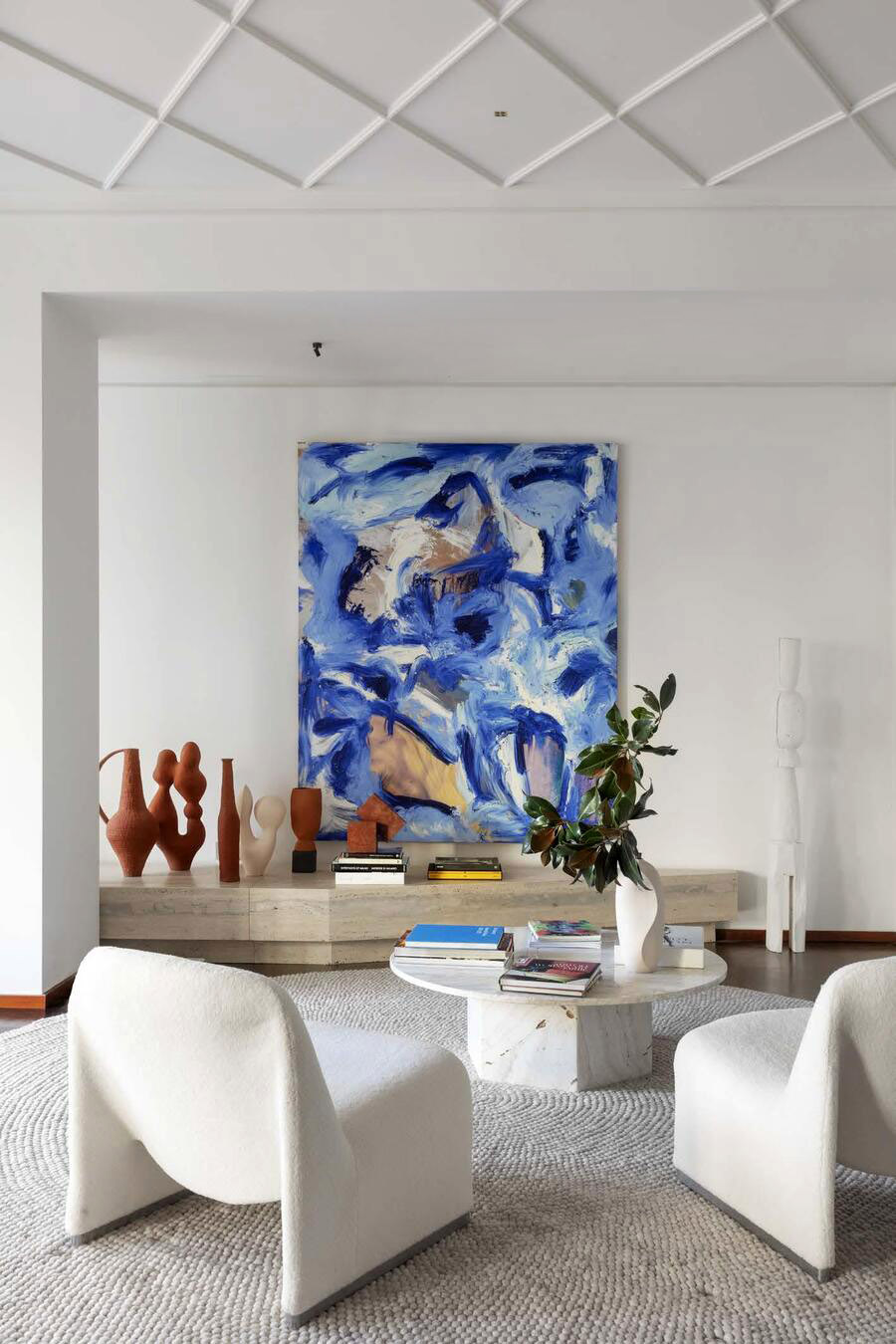
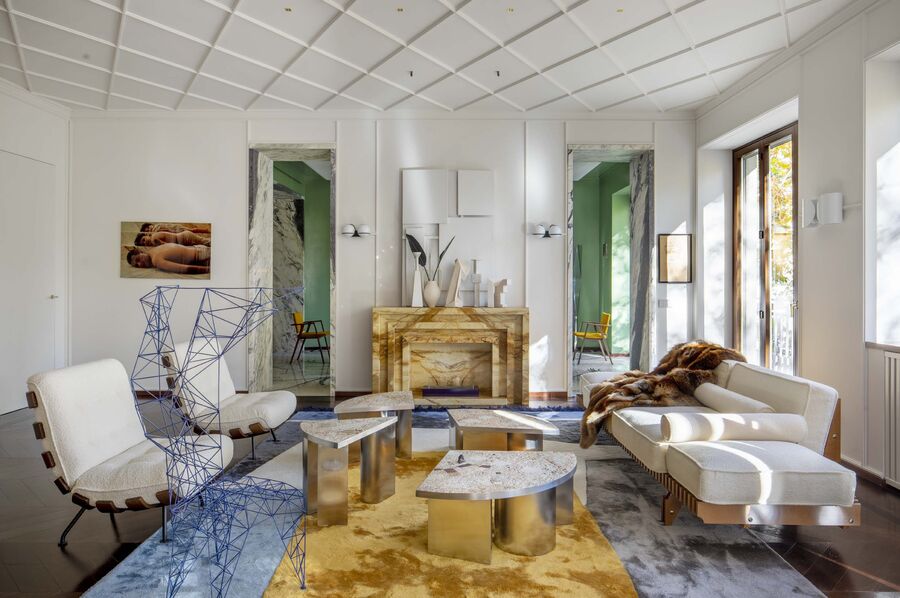
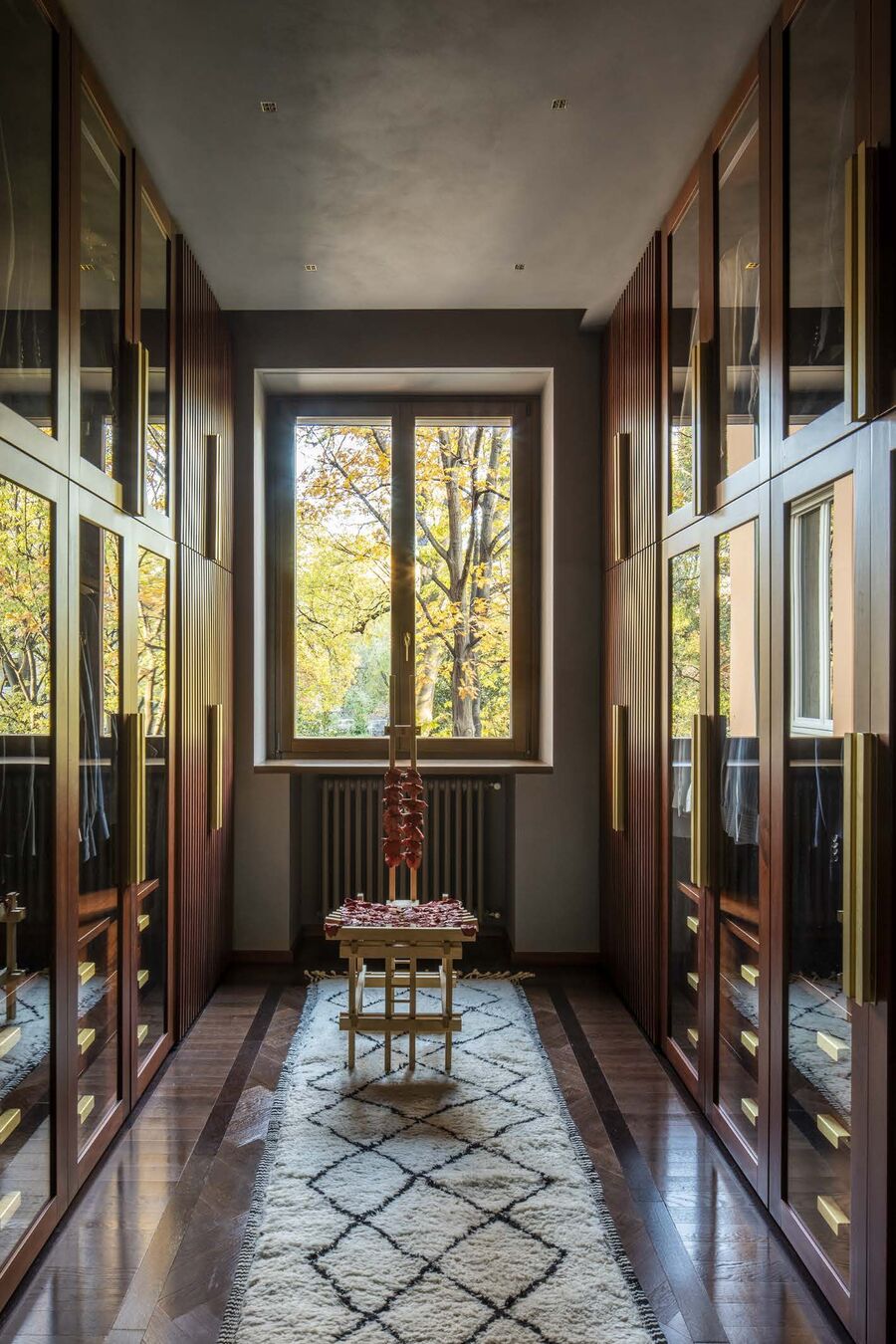
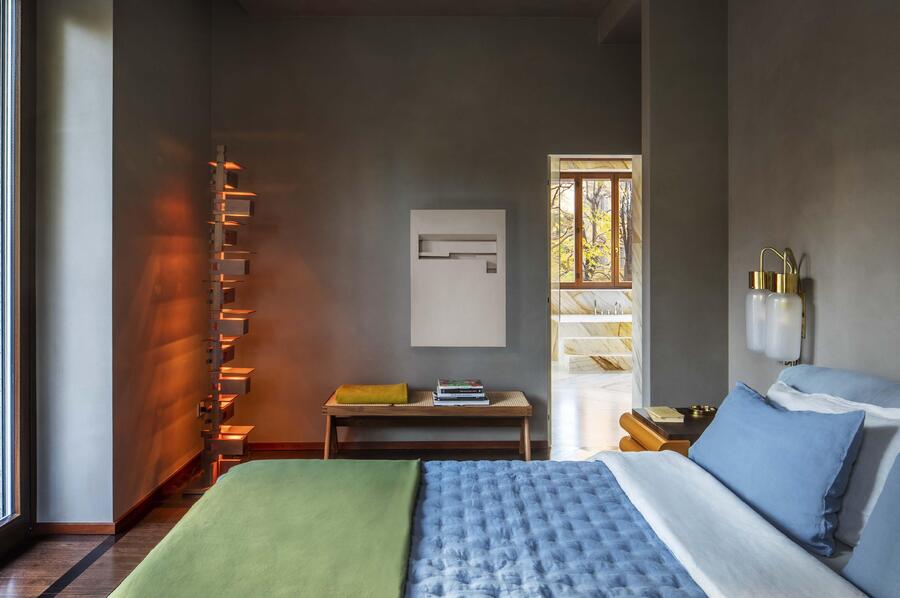


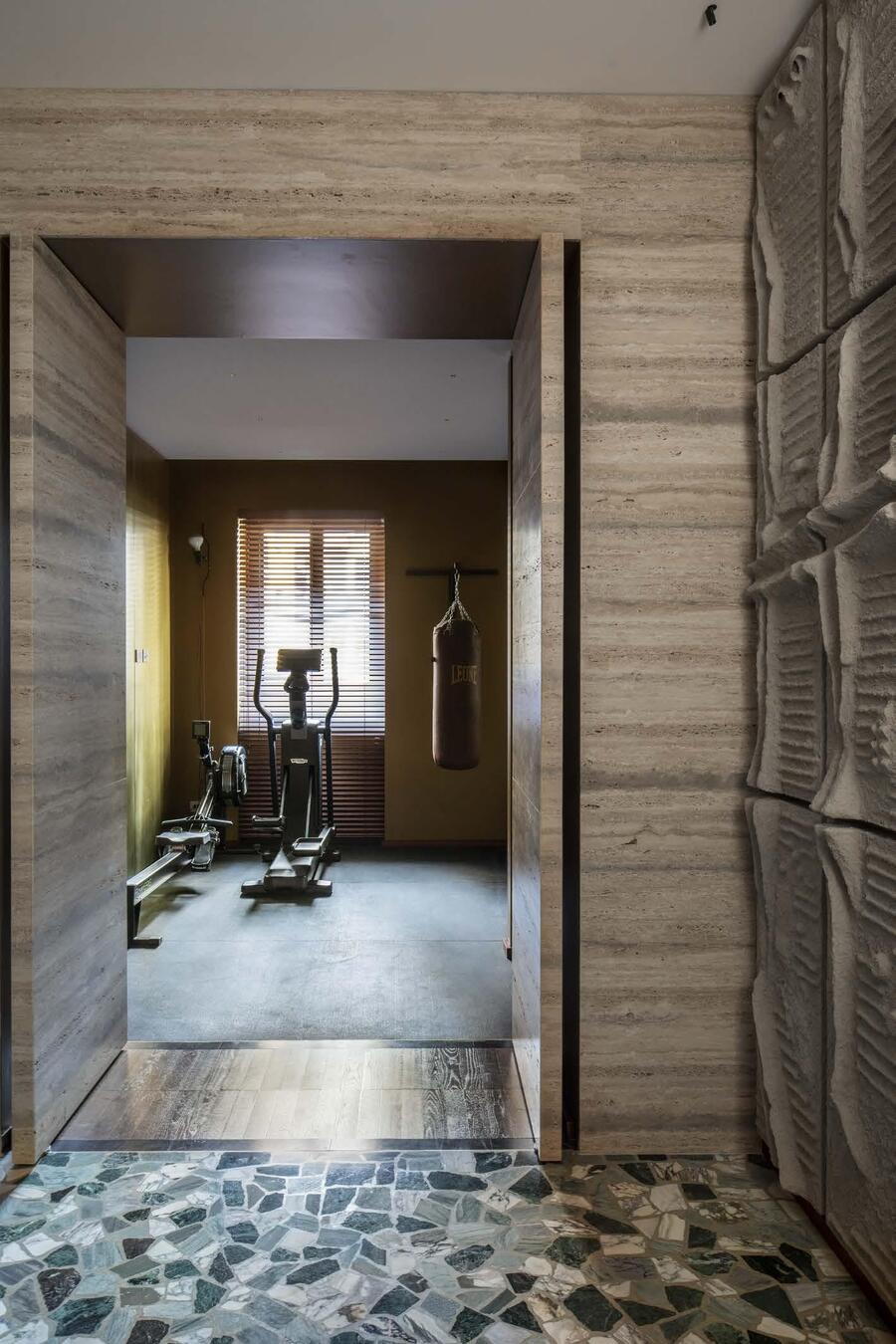
Grand
Allusion
ELLE DECOR USA Cover story - Summer Issue 2024. Text Christopher Garis
ELLE DECOR USA Cover story - Summer Issue 2024. Text Christopher Garis
Wealthy cities tend to get remade, frequently and boldly, and Milan is undoubtedly a child of this type of reinvention. The collision of industry, artistry, and finance has created a layered urban archaeology that jumps from Roman to Renaissance to postmodern.
So when ELLE DECOR A-List architect Hannes Peer first saw his client’s second-floor apartment in Milan’s center, it felt like a rare opportunity. The homeowner, Francesco Dagnino, a lawyer and single father of two young children, pushed the designer to be daring in his renovation of the three-bedroom home. “I am easily bored,” Dagnino says. Peer agreed that the space, in the bustling Brera neighborhood, needed a new start, and embarked on a gut renovation.
The change begins in the bold entry, where movable walls of Roman travertine are paired with a bas-relief artwork by Ursula Huber, who happens to be Peer’s mother. The Palladiana terrazzo floor was the only remaining element from before the renovation—when the space was the client’s law office—and even that was ripped up and reinstalled.
To the left of the entry, a home gym, complete with punching bag, sports mustard walls and rubber tile flooring. The Venetian blinds here and in the bedrooms are the only window treatments in the apartment, which is surrounded on three sides by a small park, lending a sense of privacy. On the entrance’s opposite flank is a more fanciful space: a vestibule painted a glossy goldenrod, with a chamfered ceiling and inset seating that feels intimate and inviting.
Peer’s approach is always scholarly, but here the dial is turned up so that even for the uninformed, a ziggurat-shaped transom window or mosaic floor seems in keeping with the metropolis around it. But in a city where architects and designers are household names, design buffs will notice the many references to Milan’s architectural legacy: They’ll spot the link, for instance, between the vestibule and dining room’s mosaic floor and ante-chambers designed in the 1950s and ’60s by artist Francesco Somaini for modernist buildings by Luigi Caccia Dominioni.
The ode to his adopted city (Peer is originally from South Tyrol, in northern Italy) continues. “I have included references to Gio Ponti,” Peer notes. A case in point: the dining room, lacquered a vivid green, where the Italian modernist’s sway is evident in the room’s hexagonal shape. Another influence: “the wild women of the ’70s like Gae Aulenti, Nanda Vigo, and Gabriella Crespi.” The latter designer has always been inspirational to Peer, who admires her uncompromising boldness.
“This project is my love letter to Milan.” —Hannes Peer
In an apartment where only the bedrooms have doors, Peer found clever ways to demarcate spaces: Elsewhere, he employed one of his signature moves, lining open thresholds in exquisite marbles. Another of his classic devices is the studied use of a sophisticated palette. The colors begin with a bang, with strong hues that lessen in intensity as one moves deeper into the space, toward the minimally furnished living room. Then the focus shifts to the view of the Perego Garden, one of the few remaining plots of green space within Milan’s inner ring.
Peer’s own furniture designs contribute a strong, cohesive point of view; the dining room table is from his collection for La Chance. Throughout the apartment, similar shapes repeat in a variety of materials, whether marble, wood, or resin. The cocktail table reinterprets the massive modularity of Peer’s Quadro tables but then adds mosaics in a subtle echo of the tilework in the vestibule and dining room. It is an approach that elevates his interiors to the level of a Gesamtkunstwerk, or a total artwork.
In the private areas of the apartment, walls in a cement resin finish create a peaceful, organic atmosphere. The innermost space, the primary bath, opens to the outside. Here, Calacatta Paonazzo marble, a favorite of Jean-Michel Frank’s, is butterflied with precision, while the recessed ceiling references James Turrell. “Every room has its own story, its own boldness, its own quietness,” Peer says.
While almost everything refers back to history, the effect is fresh and luxurious and an illustration of how Peer is creating a new vernacular of design. “This project,” he says, “is my love letter to Milan.”